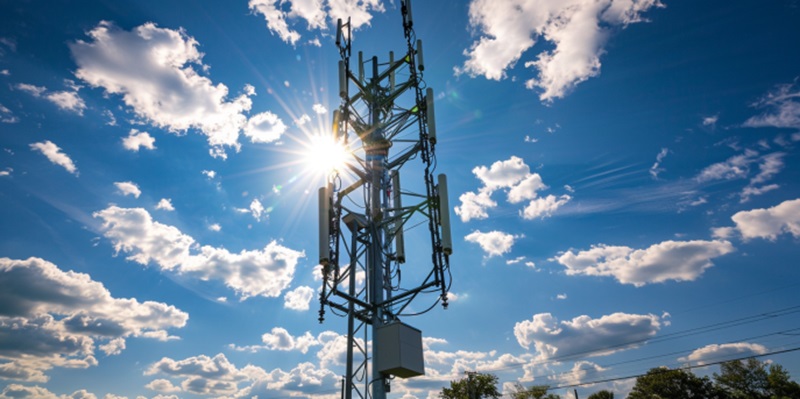The telecommunications landscape is on the cusp of a major transformation with the introduction of 5G Fixed Wireless Access (FWA). With the promise of high-speed internet and low latency, 5G FWA is set to overhaul traditional broadband services and bring connectivity solutions to previously unreachable areas. This emerging technology leverages the rapid advancements of 5G networks to deliver an internet experience that significantly outstrips that of current broadband offerings by relying less on physical infrastructures such as fiber-optic cables and more on cutting-edge wireless technology.
Exploring the Speed and Performance of 5G FWA
The Cutting-edge Speeds of 5G Technology
The raw speed potential of 5G FWA is astonishing—connecting users to the internet at theoretical speeds up to a breathtaking 10 Gbps. Even in practical use, observed performances are dramatically faster than many existing broadband services. Verizon’s 5G Home Internet, for example, has already showcased operational download speeds soaring up to 1 Gbps. This phenomenal performance could radically alter how we conceive of and use internet services, making bandwidth-intensive activities like high-definition video streaming or large file downloading more accessible and faster than ever before.
Low Latency and Real-Time Applications
When it comes to applications that need real-time responses—be it gaming, virtual reality experiences, or the increasingly important telemedicine—low latency isn’t just preferable, it’s paramount. This is where 5G FWA shines, capable of slashing latency to as low as 1 millisecond, a stark improvement over the 20-30 milliseconds average of traditional broadband. This isn’t just a minor step up; it’s a leap forward. Such low latency means more than smooth gameplay; it has the potential to revolutionize industries, aiding in everything from the execution of precise remote medical procedures to the real-time data processing necessary for autonomous vehicles.
The Deployment and Accessibility of 5G FWA
Bridging the Digital Gap
5G FWA bears the promise of democratizing internet access, delivering high-speed connectivity to rural areas that copper and fiber may never reach due to economic and geographical barriers. Its innovative use of the 5G network lays the groundwork for extensive coverage that can easily bridge the gap, providing the underconnected with an on-ramp to the information superhighway. This is more than just an upgrade—it’s a potential game-changer for remote education, healthcare, and business opportunities in rural regions across the nation.
Boosting Competition and Flexibility in Urban Markets
In urban areas, 5G FWA isn’t just another option—it’s a formidable challenger to established broadband services. Thanks to its cost-effectiveness and simpler infrastructure that doesn’t require extensive underground wiring, it can be deployed more rapidly. It not only offers consumers the benefit of choice but also exerts pressure on existing providers to improve services and pricing. The advent of 5G thus fosters healthy competition, promising not just better performance but also possibly lower prices and better service for all.
Addressing the Challenges of 5G FWA
Overcoming Environmental Barriers
The deployment of 5G FWA isn’t without its hurdles. The technology relies heavily on high-frequency millimeter waves, which offer colossal bandwidth but are relatively short-ranged and easily disrupted by physical obstructions such as buildings and trees. To circumvent these limitations, an extensive deployment of small cells is essential, but this brings its own challenges, including the potential costs and complexity of creating sufficiently dense network coverage to maintain high-quality service over broader areas.
Navigating Capacity and Infrastructure Hurdles
Alongside environmental considerations, 5G FWA faces the intrinsic challenge of balancing network capacity. As FWA systems share cellular network bandwidth with mobile services, the risk of performance bottlenecks emerges, especially as user numbers increase. Although the 5G infrastructure continues to grow, with big players investing heavily, it’s still predominantly urban-focused. Reaching more widespread, comprehensive rural coverage is part of the grand vision for 5G, but achieving it demands persistent effort and investment.
Consumer and Provider Perspectives on 5G FWA
Consumer Benefits and Setup Simplicity
For consumers, 5G FWA could herald an era of more robust and affordable internet services. With high bandwidth support, streaming in 4K, unimpeded online gaming, and seamless remote working could become standard experiences. The simplicity of setting up 5G FWA, often a straightforward user-installed process, adds another layer of appeal, contrasting the typically technician-required installations for traditional wired connections. This could prove to be a significant draw, offering not just superior performance but also ease of adoption.
Service Providers’ New Revenue and Challenges
The telecommunications industry is on the brink of a ground-breaking shift with the advent of 5G Fixed Wireless Access (FWA). This innovation heralds a new era of high-speed internet with significantly reduced latency, poised to revolutionize how we access broadband and extend coverage to regions once deemed inaccessible. 5G FWA taps into the remarkable progress made in 5G networks, enabling a superior internet connection that far surpasses existing broadband capabilities. Rather than depending on established physical networks, like fiber-optic cabling, this modern approach utilizes state-of-the-art wireless technology to provide advanced connectivity. The excitement surrounding 5G FWA is due to its potential to provide an enhanced online experience without the limitations imposed by traditional broadband infrastructure. With its impending rollout, 5G FWA represents a pivotal turning point, promising to redefine communication landscapes and bridge the digital divide with its robust framework and extended reach.

